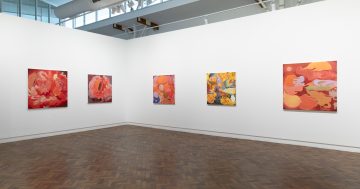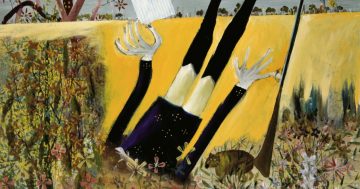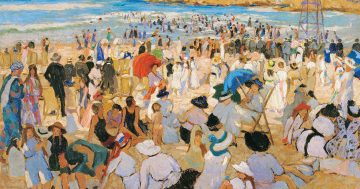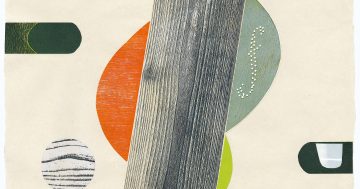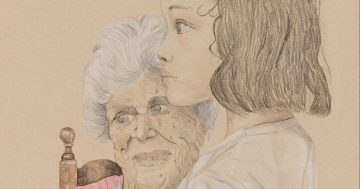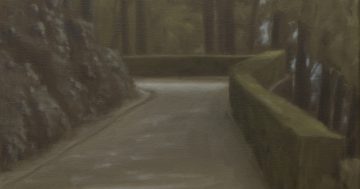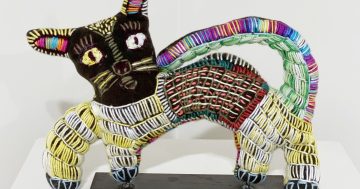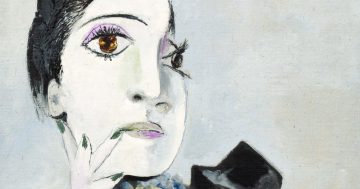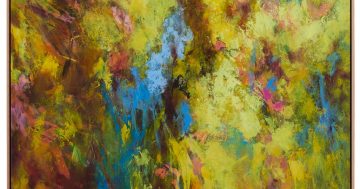
Yam awl, 1995. Emily Kam Kngwarray’s work is at its strongest in this outstanding retrospective at the National Gallery. Images: Supplied.
This is the third major retrospective exhibition of Emily Kam Kngwarray’s work to be seen in Canberra since 1999 and arguably the best for its scope and depth of research.
It is spectacular but restrained in its display with huge flowing seas of batik, the vast floating 22-panel Alhalker suite, 1993, with its neon pinks, vibrant orange and electric blues, and the more modest scale canvases generally arranged in thematic groupings. The batiks play a bigger role in this display than in any previous exhibition.
It presents a comprehensive survey of the artist’s work, from the big dot or seed designs through to the simple, largely monochromatic body line paintings associated with designs painted on women’s breasts, and her late works, including the complex linear designs of the yam dreaming and sacred grasses works.
In her final days, she painted a series of small canvases covered with broad gestural marks.
Kngwarray (c.1914-1996) was a senior Anmatyerr law woman who only turned to painting in acrylics when she was in her 70s in 1988/89, and by the time she died, less than a decade later, she had reputedly produced as many as 3000 works.
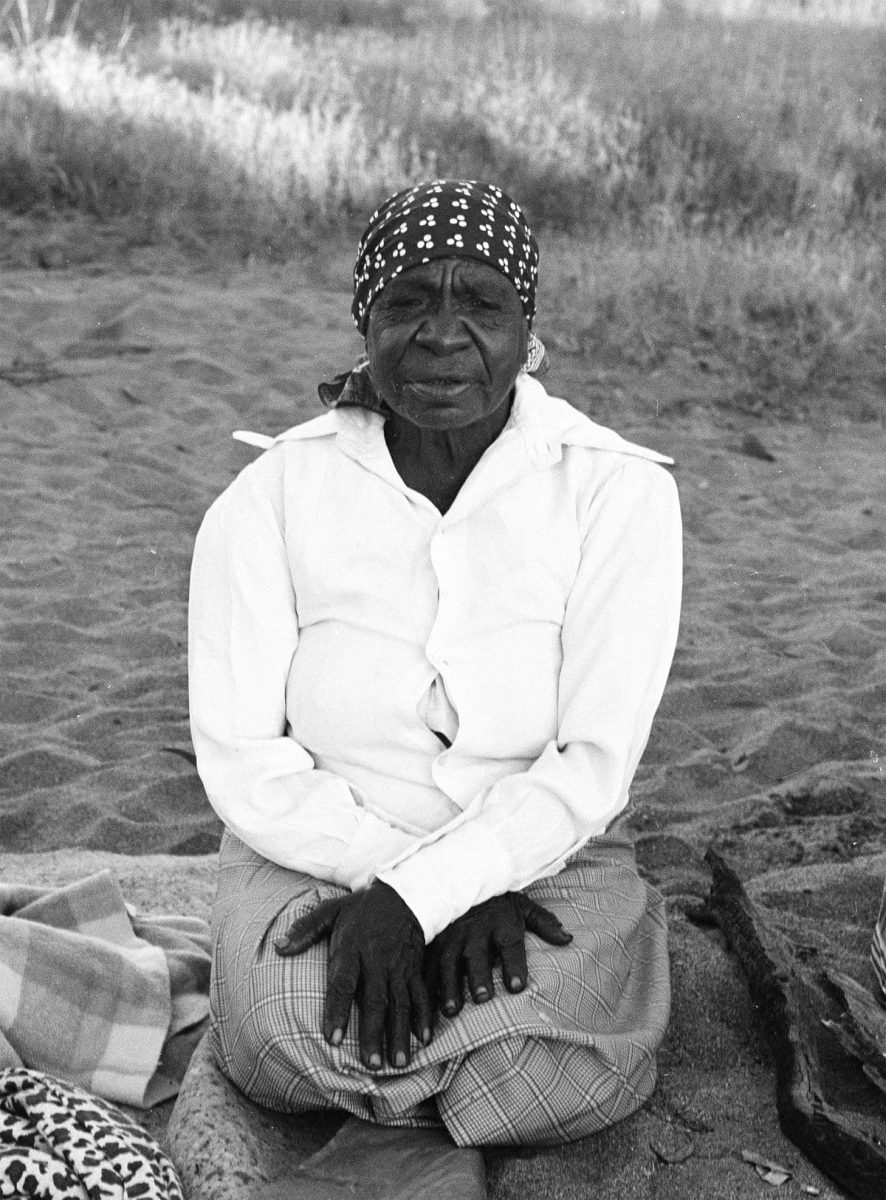
Emily Kam Kngwarray near Mparntwe (AliceSprings) after the first exhibition of Utopia batiks in 1980. Photo: Supplied.
The romantic mythology of an elderly Indigenous woman living in the remote outback suddenly turning to painting in her late 70s and creating ‘masterpieces’ through pure intuition gained currency in the popular art press and among art dealers, some of whom unscrupulously exploited her art and supplemented the insatiable appetite for her work with forgeries.
As an elder and ancestral custodian, she had ‘painted’ for ceremonial purposes for many decades before venturing into acrylics and the public sphere late in life.
She generally worked within a tradition of central desert painting, drawing on her experience of work with batik to employ dots in a mesmerising rhythmic pattern.
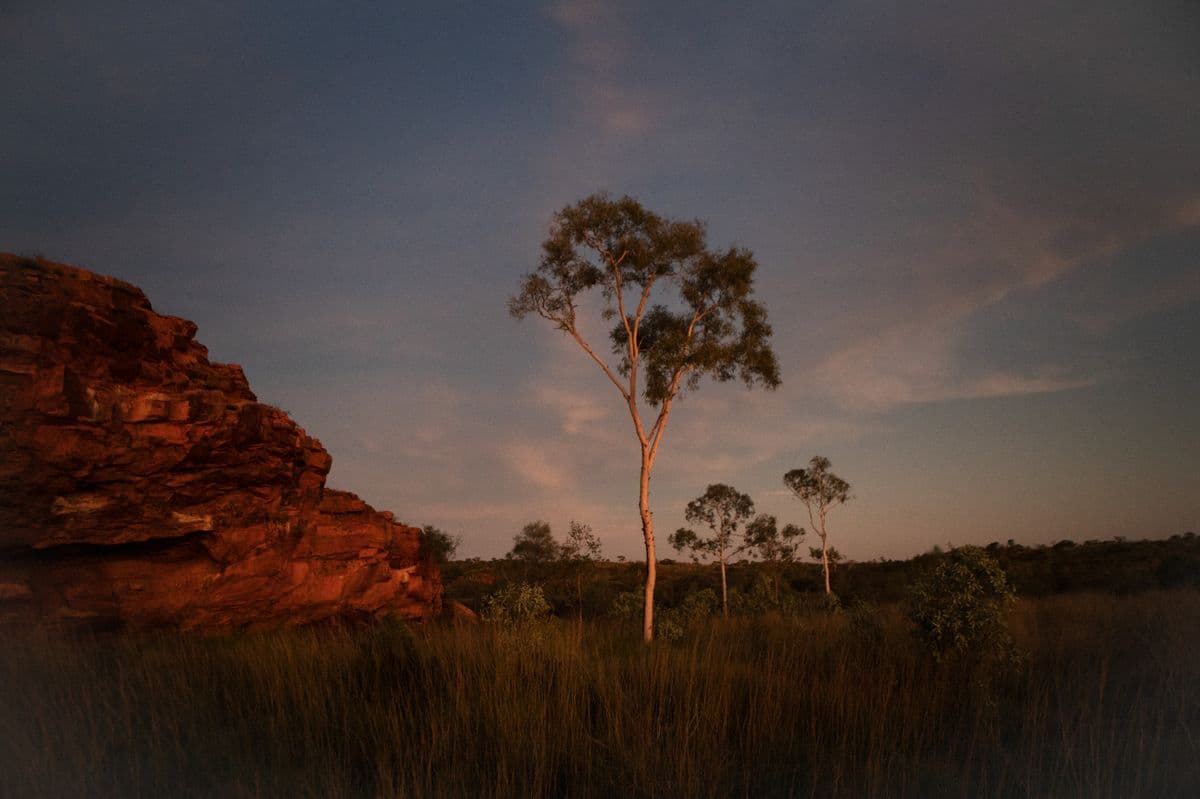
Emily Kngwarray’s Alkhaler Country on the Simpson desert edge. Photo: Dylan River.
She also adhered to the conventions of central desert painting in abolishing the horizon line and adopting an aerial perspective of seeing the land from above, but rather than adopting this bird’s eye view for recording ancestral tracks and showing that which lies beneath the surface, such as waterholes, she used it as a strategy to allow the beholder to dissolve into the landscape and to embrace the gestural energy paths left by her performance on the canvas.
Although her canvases frequently denoted the contours of her country, the cycle of the seasons, from the parching dry to floods and the resulting regeneration of the vegetation, the pattern of seeds and the shape of the perennial herbaceous vines of the yams, as well as spiritual forces, for her non-Indigenous audience, she frequently appeared as an abstract artist and was viewed in the context of Pollock, Tuckson and Motherwell.
In reality, her art had nothing in common with these artists – there was nothing that she could have learnt from them, nor they from her.

The Alhalker suite is a brilliant sweep of colour, arranged in no particular order but representing the artist’s country. Photo: Supplied.
What was significant in her oeuvre was the boldness in her use of brilliant colour and the rhythmic human scale of performance in her linear mark-making. Unlike much of the desert painting with its layering of iconography, Kngwarray refused to provide a detailed schema through which to ‘decode’ the marks other than a broad statement that it was all to do with the place of her birth, Alhalker, and created canvases which seemed to resonate with non-Indigenous audiences.
When questioned, she said that Alhalker was her only subject: “Whole lot, that’s whole lot, awelye (my dreaming), anwerlarr (pencil yam), arnkerrth (mountain devil lizard), ntange (grass seed), tingu (a Dream-time pup), ankerr (emu), intekwe (a favourite food of emus, a small plant), atnwerle (green bean) and kam (yam seed). That’s what I paint: whole lot …”
Each generation will discover its own Emily Kam Kngwarray and whereas earlier shows felt the imperative to defend this artist’s standing and to justify the million-dollar price tag that some of her work attracted, this exhibition simply celebrates her as one of Australia’s most significant painters of the late 20th century.
What has also changed over the three major exhibitions has been the spelling of her name.
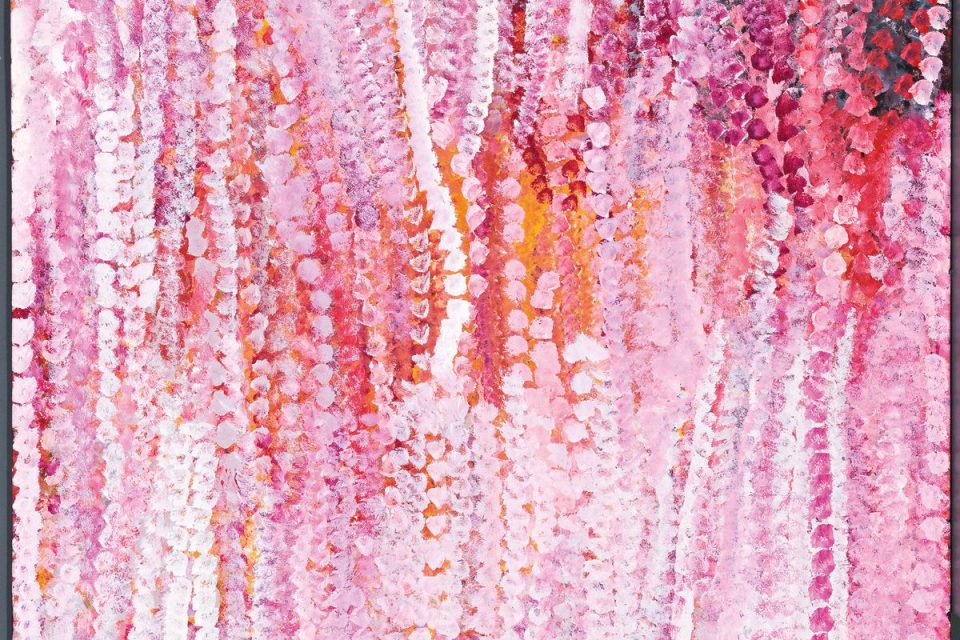
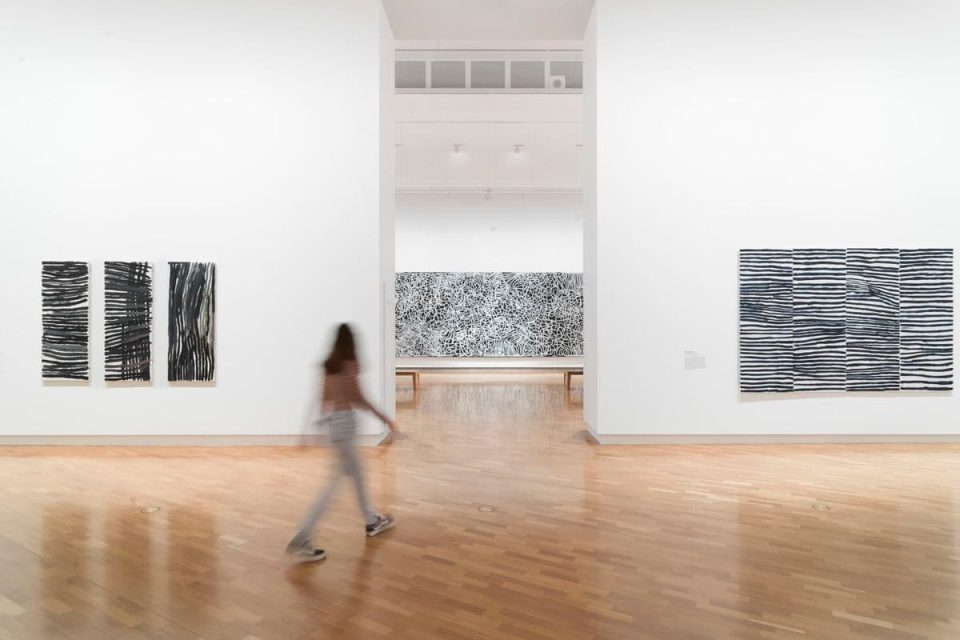
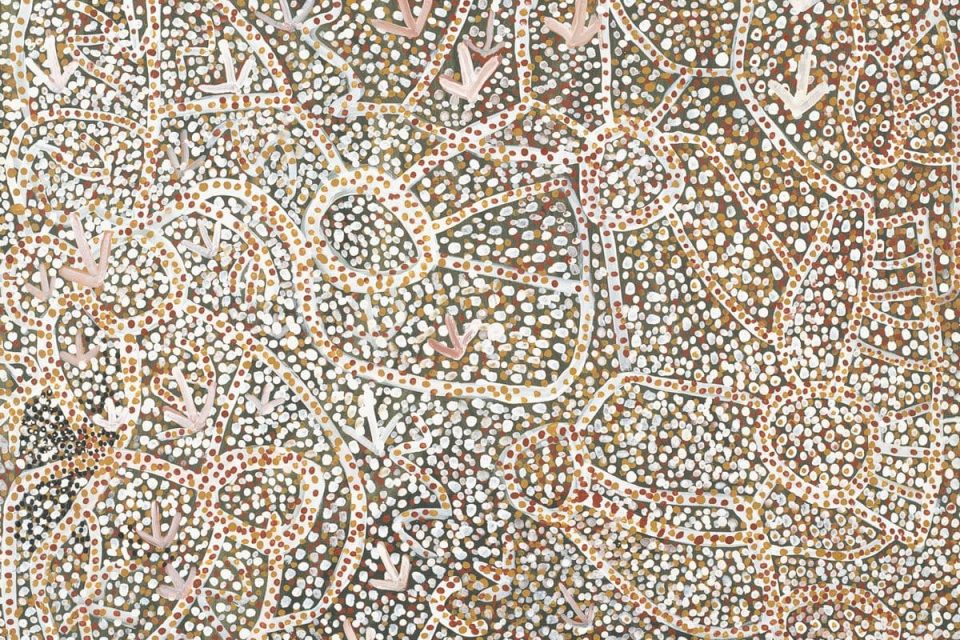
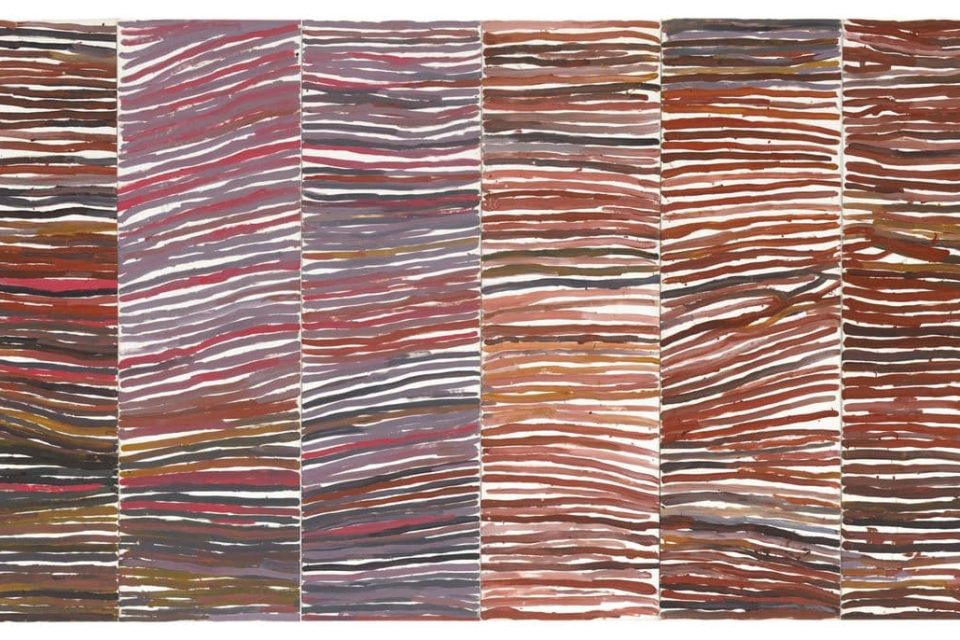

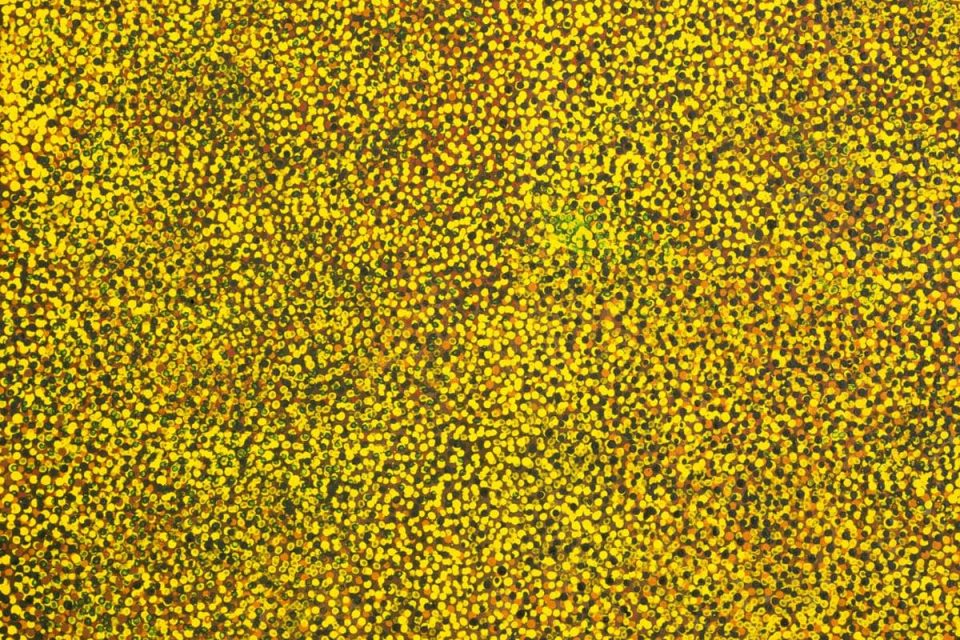
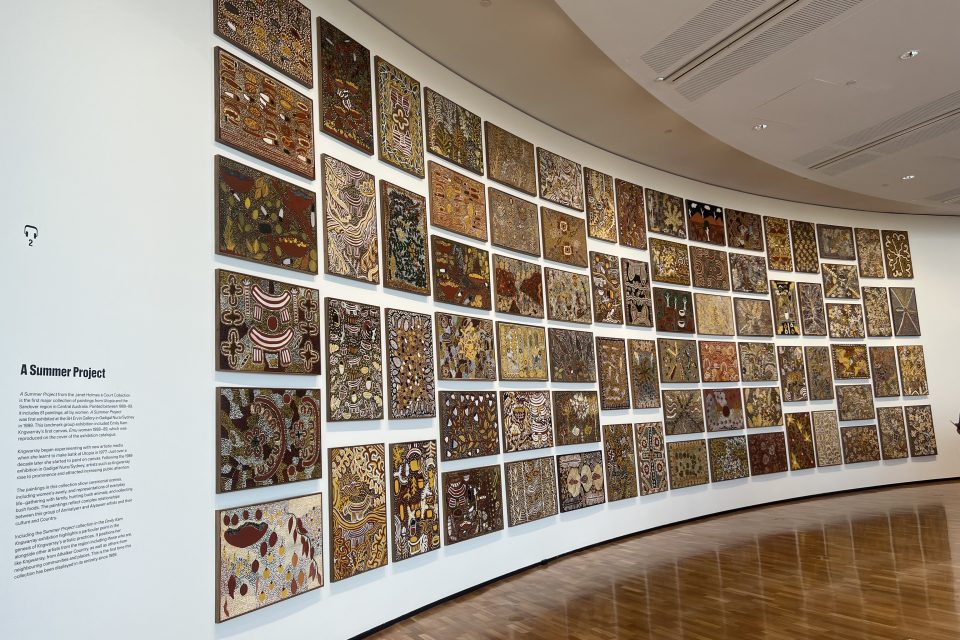
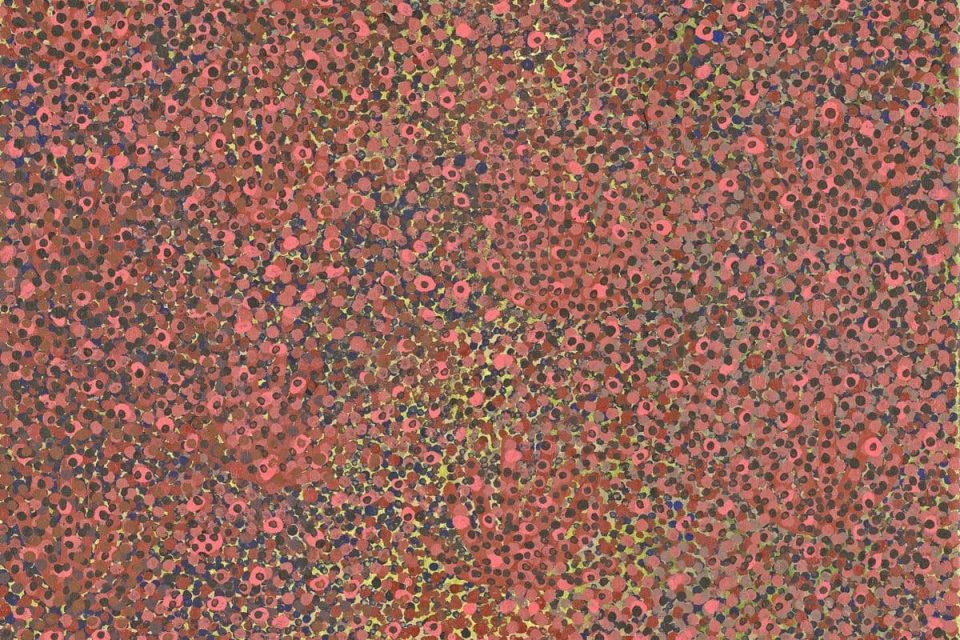
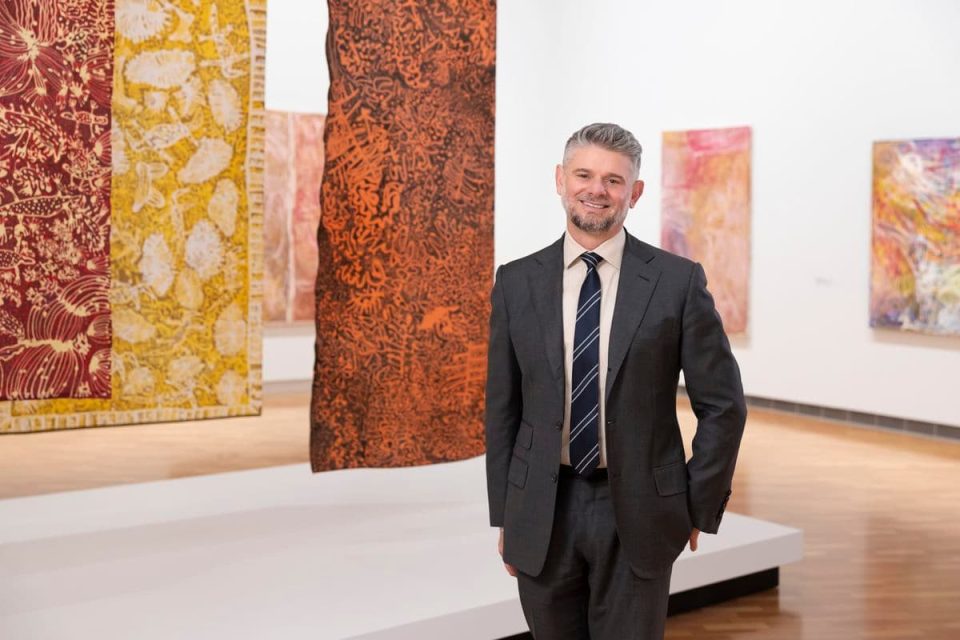
Emily Kam Kngwarray is a brilliant and evocative exhibition that reveals the power and majesty of her artistic vision – unique in Australian and international art. This show travels to Tate, London, in 2025, and a major feature film on her art and life will be released.
Emily Kam Kngwarray is at the National Gallery of Australia, Canberra, from 2 December to 28 April 2024 (admission charges apply).
Sasha Grishin is an Australian art historian, art critic and curator.
Original Article published by Sasha Grishin on Riotact.


